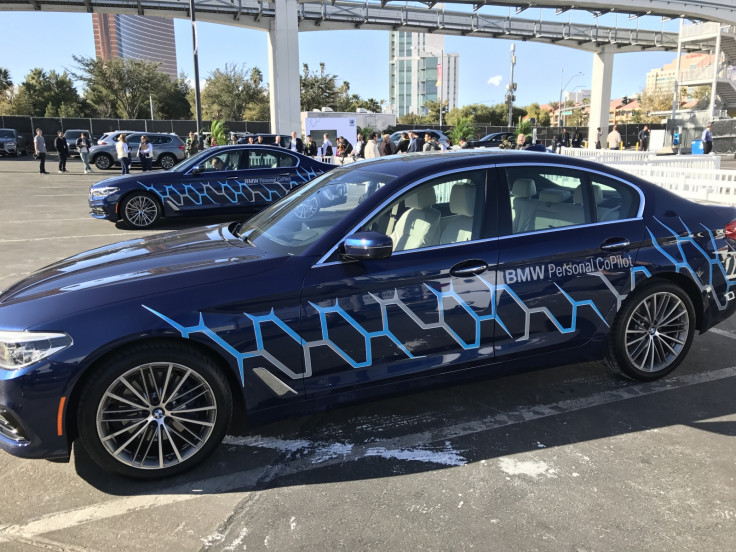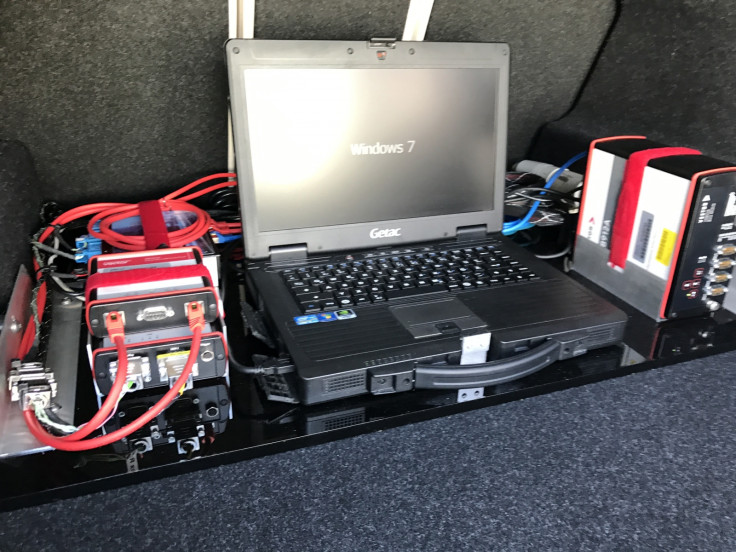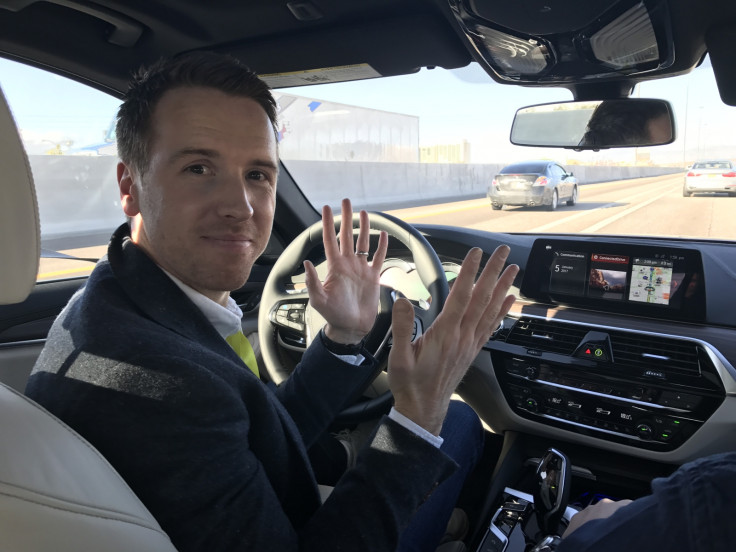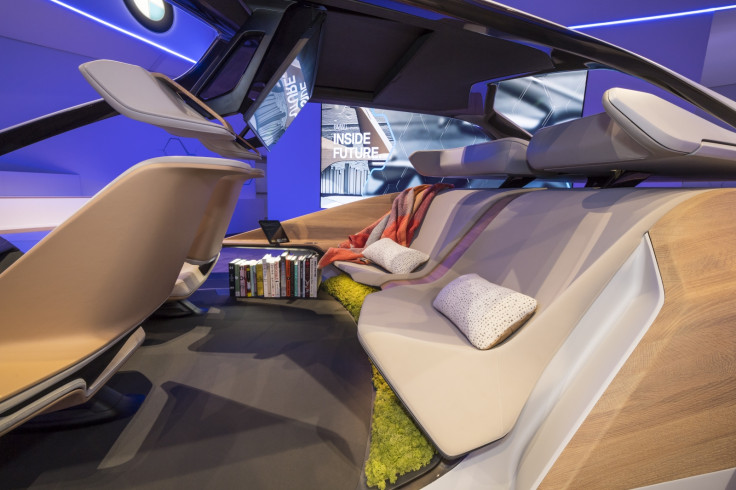BMW self-driving car preview: We take a hands-free ride into the future
Prototype Personal Co-Pilot system shows how we'll spend our time when computers take the wheel.

Welcome to Las Vegas. In a place full of oddities and off-kilter attractions, we found ourselves about to witness the craziest thing since arriving in Sin City – taking our hands off the wheel of a speeding BMW on a busy highway and then turning around to have a conversation with passengers in the back.
Joining the convoy of major motoring manufacturers, BMW has begun its journey towards autonomous driving and this is its first step along the road. IBTimes UK was given an exclusive test drive of its Personal Co-Pilot system — a work-in-progress technology aiming to make the self-driving dream a reality.
At CES, autonomous car technology was in full force, stealing headlines from the usual crowd of consumer electronics giants. Toyota envisioned an emotional relationship with our self-driving cars, while Mercedes-Benz announced an AI partnership with NVidia.
BMW also laid out its vision of the future, demonstrating how we'll be interacting with our cars and getting around in the decades to ahead.
But first, it's not just in the car where we'll see motoring technology affect our lives. Essentially, journeys of the future will start in the living room.
At a giant touchscreen 'Mobility Window' in a mock-up house, its display helped plan our day, plotting waypoints on a live map that are sent directly to the car so it knows our schedule and route.
Once in the car the iDrive, gesture-controlled monitor presents drivers with where to go. The prototype car being demonstrated was an ordinary 5-Series, but inside the boot was a computer loaded with software that modifies its ability to effectively drive itself.

How BMW's autonomous technology works
Through a combination of uploaded high-definition map data to the laptop in the back, the live camera data from the car, lane assist and braking sensors it creates complex calculations using an algorithm that results in a rudimentary form of autonomy. Fundamentally, it keeps the car at your chosen speed and uses the lane guidance to stay in lane all the while scanning the traffic ahead to automatically brake for you.
We began our test drive the old-fashioned way, manually navigating the roads of Las Vegas, which brought us to our first tech treat. While sat traffic lights, information displayed on the monitor called Live Tiles, included a real-time countdown to how long the light will stay red for. Game-changing.
Until you've used this, you won't realise how valuable this feature is. It's the difference between comfortably taking off your coat when you think you've got a spare second or having to drive off with one arm still stuck in the sleeve. Knowing how long you'll be left waiting takes away the frustrating unknown, relieving the stress of shouting at the lights to change when you're in a hurry. On top of that, it'll also tell you how long lights ahead of you would stay green so you can speed up just enough to catch them.
We were told the data is taken from local info, and is crowdsourced to create the database and it's impressively accurate, too — give or take a second or two. This feature sadly won't be on the new, technologically advanced 5-Series, and we were not told when this might be rolled out, but at least that model would be able to scan for parking spots for you.
I am a passenger

From urban roads to the highway, we merged into the frenetic traffic where the Personal Co-Pilot's party piece awaited. Defying all human instinct to concede control, we got up to speed and pressed a stickered button on the steering wheel to activate autonomous mode. Allowing a laptop to take the wheel and pedals amid thronging traffic was as unnerving as its gets, but we were encouraged to take in the sights, play with the in-car entertainment and have a full conversation with backseat passengers without looking at the road once.
Despite being in its early testing stages and still requiring a 'minder' sitting in the front seat ready to help if anything went wrong, the system worked flawlessly. It retained speed, automatically braked if the car ahead slowed and, crucially, followed the road.
While this was all happening, we were able to use the infotainment display to shop on the fly, read information about landmarks we just passed, and use the integrated Microsoft Cortana digital assistant to look for and book restaurants. We used Amazon's Prime Now one-hour delivery service, and the navigation system was smart enough to figure out a pick-up point on our journey and re-route us accordingly. Life-changing.
Strangely, after just a few minutes we were completely comfortable not paying attention to the road ahead, which is the whole point BMW is aiming for. Every manufacturer knows self-driving technology is no longer stuff of sci-fi fantasy, it's already here with the likes of Tesla's Autopilot and fleets of semi self-driving taxis and buses beginning to crawling onto the road.
The final destination for self-driving
Full autonomy is the end goal. Some argue we may never fully achieve it, but if we do BMW is answering those sociological questions about what we'll be doing with our time when we aren't having to take the wheel ourselves. Driving the Personal Co-Pilot was a glimpse at the future of driving and how it will become more of a passenger experience if you want it. We'll have time to work, chat, relax and be entertained – all things we did on the test drive.
Going one step further BMW unveiled another concept at CES – the car interior of the future. The back seat was more like a living room with sofa-like seats, a big screen TV and even a built-in bookshelf. All that was missing was the fireplace. It might be a bit visionary but it gives us food for thought.

It's a long road ahead but it's a landscape that's transforming at a rapid pace. Teaming up with Intel and MobilEye for an open autonomous environment that any brand or manufacturer can join puts BMW on the fast track.
That formidable trifecta from these companies offering hardware, mighty computing power and the latest sensor technology at its disposal, mean one may be able to snuggle up with a good book on the M25 as the car takes care of the traffic sooner than we hope.
© Copyright IBTimes 2025. All rights reserved.






















